By: Jay White
Most of the time when someone is asked to imagine a penguin, they could think of a very basic concept; black body, white belly, flipper-like wings, a funny little waddle, and the ability to slide on their stomach. Penguins are much more than this, coming in different sizes, environments, and behaviors.
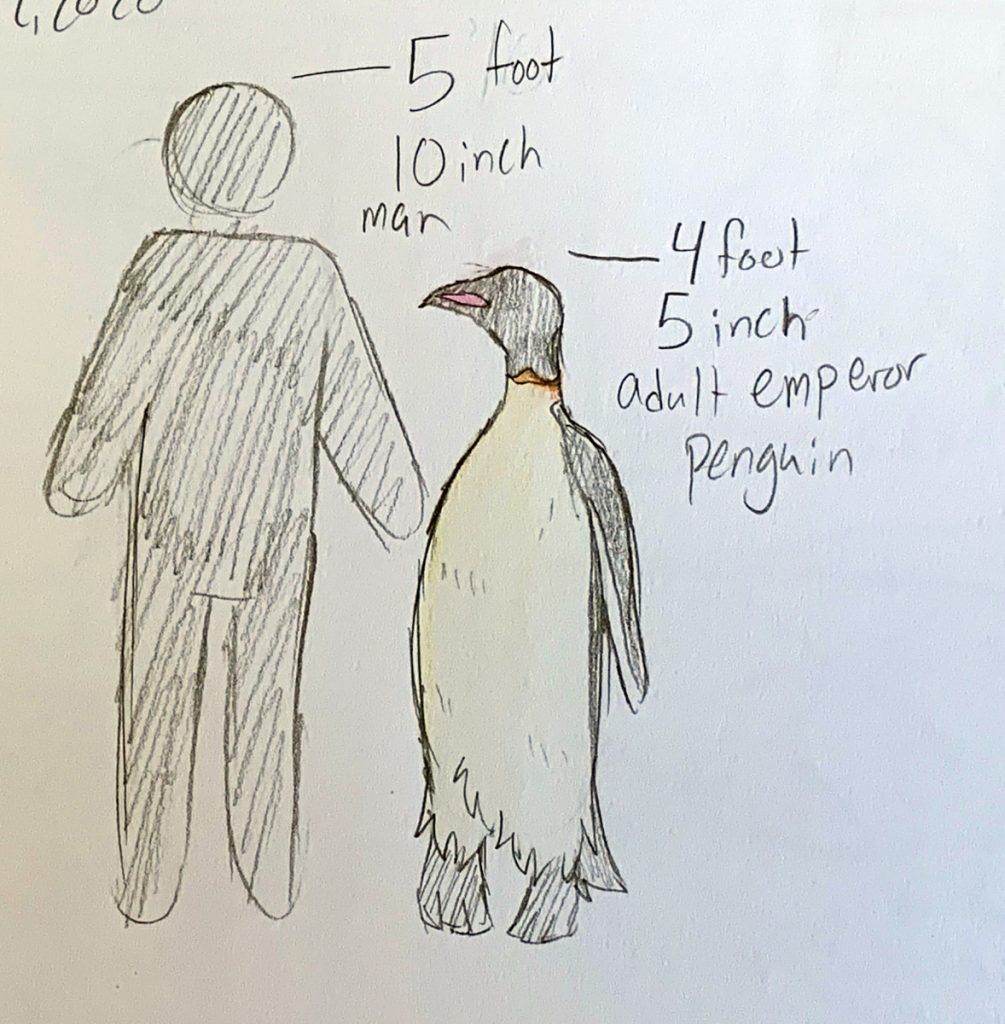
One of the most commonly heard of species in the penguin family is the Emperor Penguin (Aptenodytes forsteri): these are the largest species of penguin, coming in at between three to four and a half feet in height, and weighing up to 88 pounds. (National Geographic, 2018) Emperors live in the southern hemisphere, which just so happens to be where penguins almost exclusively live. (Askew, 2009) More specifically, Emperors live in Antarctica, which can be seen as one of the harshest, and most difficult places to live. Antarctic winds can reach up to negative 76 degrees in temperature, so it’s extremely important that Emperor penguins live as a large, cooperative group. This way they can form a large group that stays extremely close together, called a huddle, which will rotate out penguins on the inside and outside of the huddle to make sure the group can stay warm. During the winter season, they stay on the ice to breed and lay eggs, after the females lay their egg, they leave it with their male counterparts, and begin a hunting journey that can last up to two months. (National Geographic, 2018)
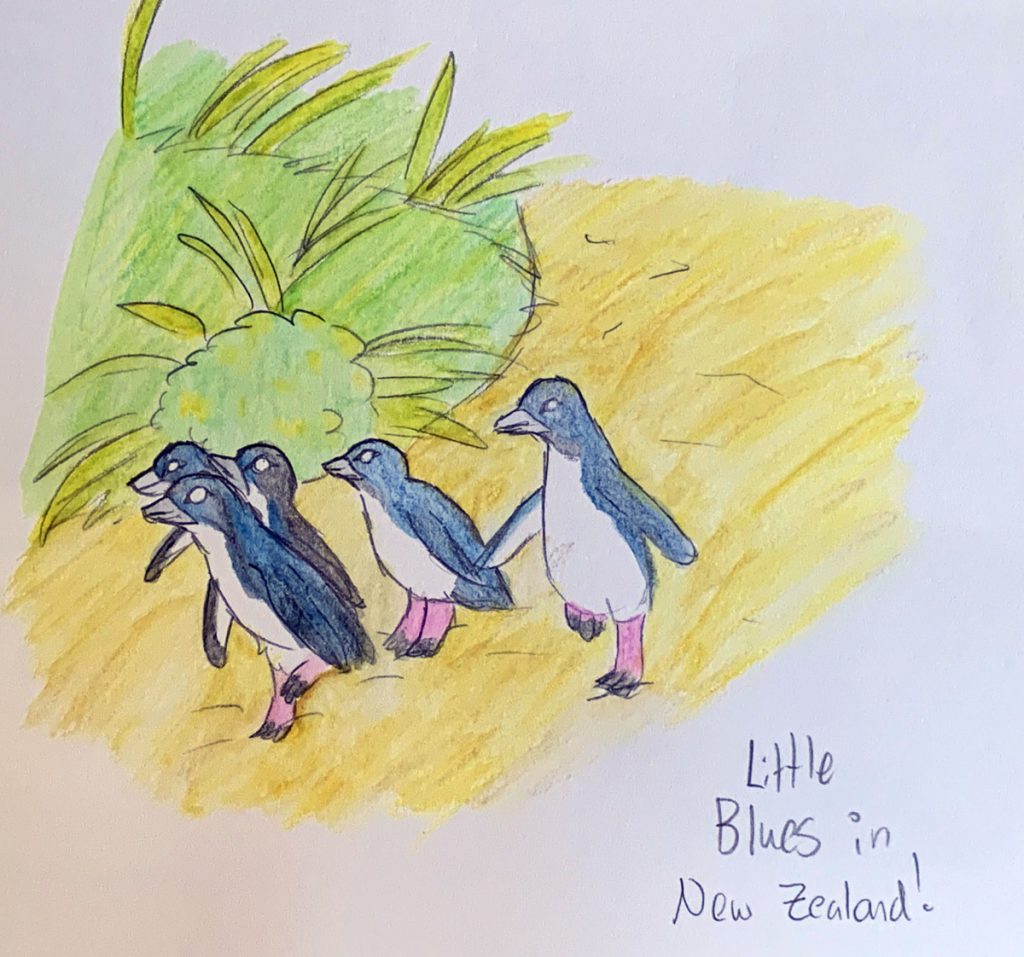
Alternatively to how Emperors live, there is a species of penguin named the Little Blue, or Fairy penguin (Eudyptula minor) (Askew, 2009) which can be between 13 and 15 inches tall, and one and three quarters to three pounds. (penguins-world) This small species of penguin lives in a vastly different environment than the Emperor; living in Oamaru, Chatham Island, and Banks Peninsula in New Zealand, Phillip Island in Australia, and along the coasts of Tasmania. (penguins-world) This environment is vastly different than the Antarctic, and also includes a much higher chance of run-ins with humans. Little Blues also work in groups, though these groups are much, much smaller than the groups formed by Emperors. These smaller hunting groups usually consist of about 10 individuals, and these individuals will usually go to hunt at night. (penguins-world)
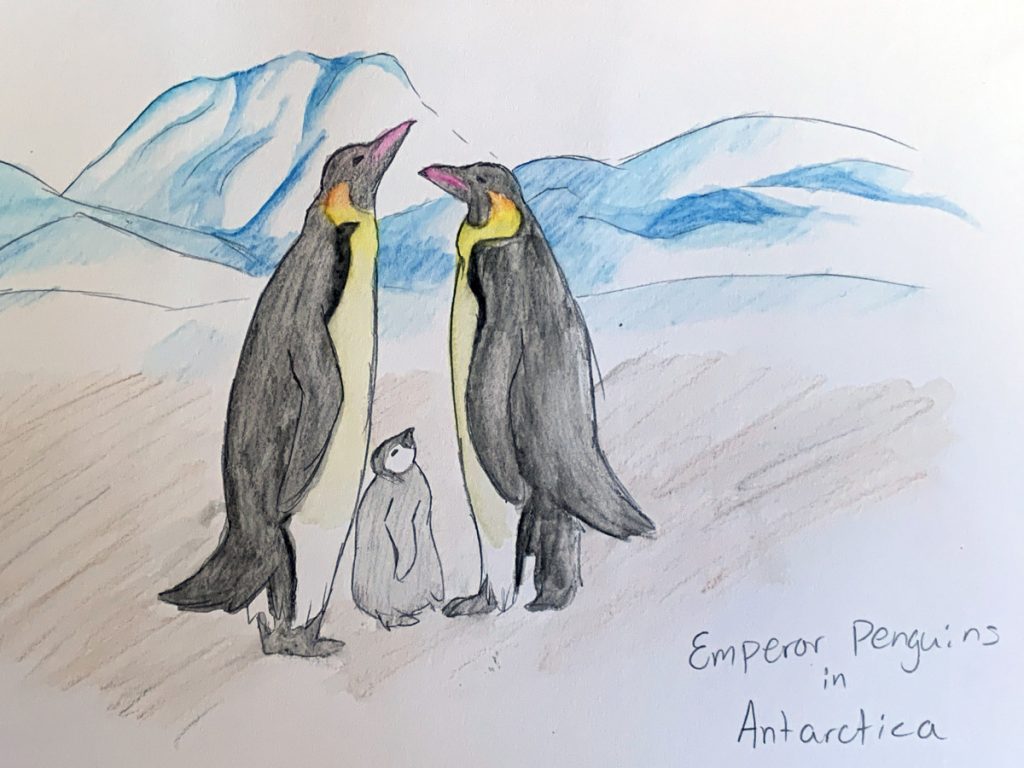
Antarctica and New Zealand are separated by 3,100 miles. (distancefromto.net) and so these two penguins environments are vastly different, providing different needed skills, different challenges, and most importantly, different ways to hunt. Both Emperors and Little Blues are carnivores, eating different kinds of fish. (Askew, 2009) Little Blues mainly eat sardines and anchovies, but can also eat squid, krill, and small octopi. (penguins-world) Emperor penguins mainly eat Antarctic silverfish, but they also eat krill and some species of squid. (antarctica.gov.au, 2020)
Since both species prey are fish, krill, squid, and sometimes even octopus, these birds have evolved to be able to swim extremely well instead of flying like most other birds. The swimming skills of an Emperor penguin are insanely impressive. They’re able to dive up to 1,850 feet and stay there for up to 20 minutes in order to hunt. (National Geographic, 2018) The Little Blue doesn’t need to dive as far for its prey, on the other hand, and can only dive about 230 feet for about 35 seconds, but they usually hunt between 59 and 102 feet. (penguins-world)
This also leads to a difference in how they exit the water. Since Emperors need to launch out of the water onto a sheet of ice, they’re able to swim very fast and release a lot of air from their feathers or the crowns of their head to create bubbles that help them launch out of the water and land on the ice. They usually go at such a speed that they knock the wind out of themselves when they hit the surface of the ice. (Nicklen, 2012) Meanwhile, Little Blues don’t have to launch onto the ice, and instead just walk onto the beach they live on, which could be leading to edges of rocky inclines, which they’d climb up by hopping from one rock to the next. (Wu, 2014)
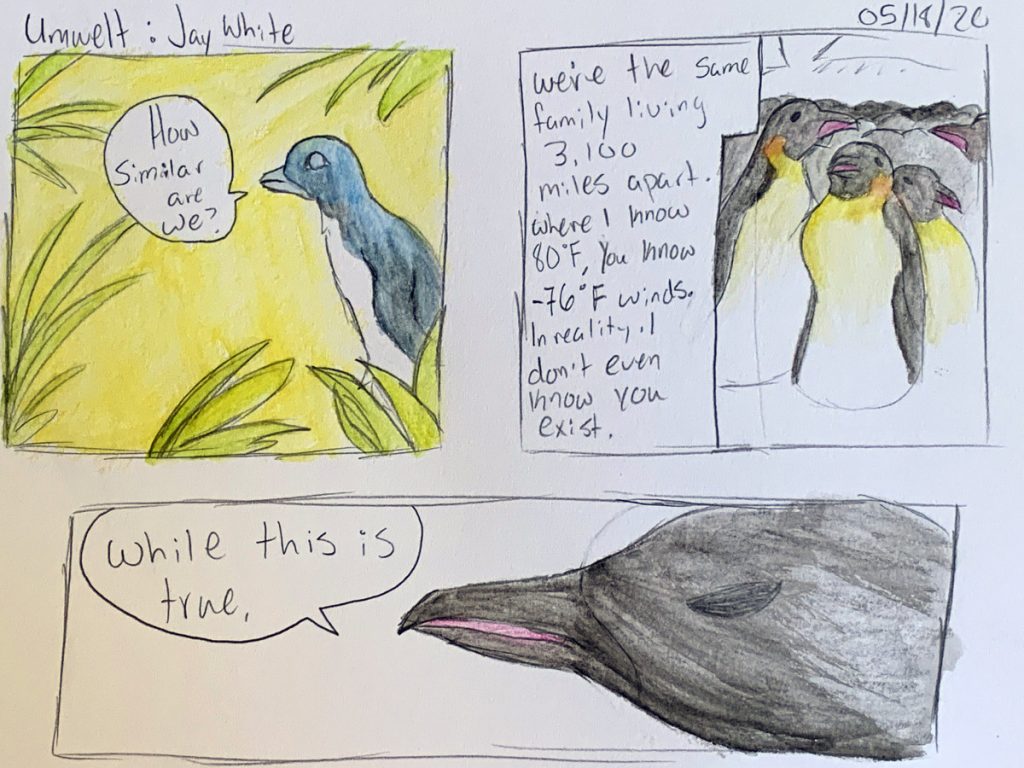
Panel 2: “We’re the same family living 3,100 miles apart. Where I know 80 degrees Fahrenheit, you know negative 76 degree Fahrenheit winds. In reality I don’t even know you exist.”
Panel 3: “While this is true,”
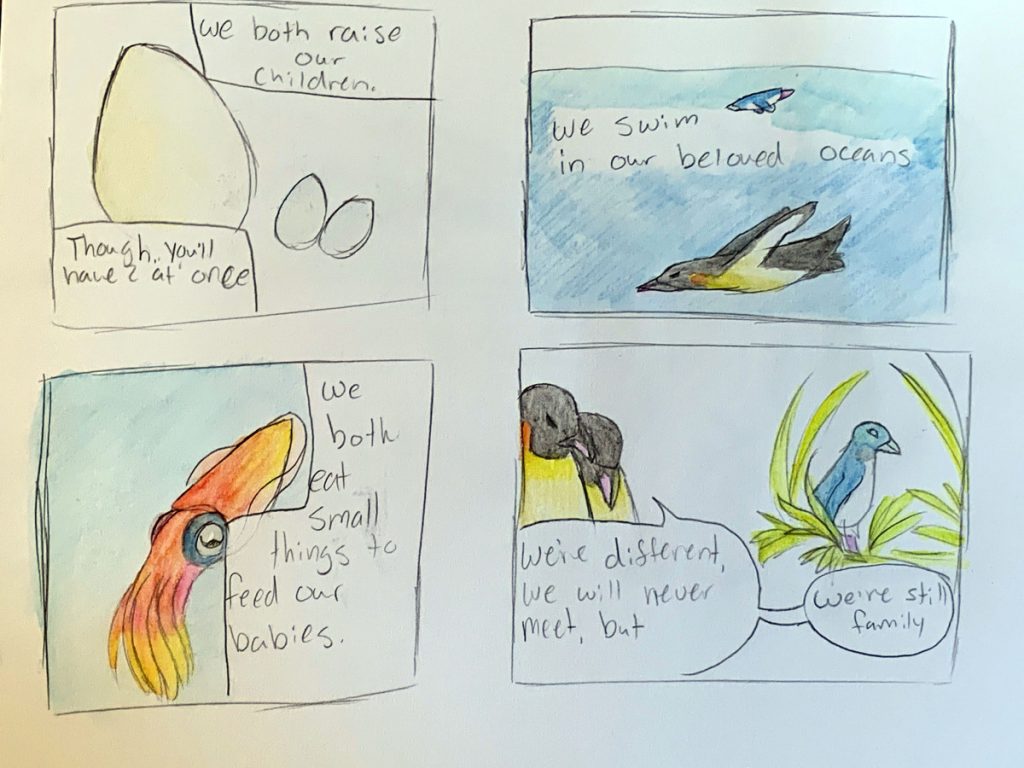
Panel 2: “We swim in our beloved oceans”
Panel 3: “We both eat small things to feed our babies.”
Panel 4: “We’re different, we will never meet, but we’re still family”
It’s very cold, this is nothing new though, it’s always cold. The water you hunt in is cold, getting colder as you dive deeper looking for silverfish and squid. The ice you stand on now is cold, even the air is cold. You stand propped up on your heels as you hold your baby under your feathers, you’re used to the cold, and the wind, but your baby isn’t, they haven’t even been born yet. The mother of your child had left about a month ago to get food for your baby. Whenever she returns, that will mean you can go back to the water you hunt in, dive deep, and eat as many fish and squid you can catch. That is… if she comes back. You know about the dangers of the waters you hunt in, there’s large leopard seals who’s teeth and jaws are terrifying to even think about. You decide not to think about the mother of your baby possibly dying, which seals yours and your baby’s death as well. You decide to focus on keeping your baby alive now, and hope that in a month’s time, you’ll get to return to the water.
Bibliography:
- Nick Askew, (24 Jun 2009) “List of Penguin Species”, [text] www.birdlife.org/worldwide/news/list-penguin-species.
- National Geographic (24 Sept 2018) “Emperor Penguin” [text] www.nationalgeographic.com/animals/birds/e/emperor-penguin/.
- Penguins-World, “Little Blue Penguin” [text] www.penguins-world.com/little-blue-penguin/.
- Australian Antarctic Division (13 Feb. 2020) “Emperor Penguins.” [text] Australian Government, Department of Agriculture, Water and Environment, Australian Antarctic Division www.antarctica.gov.au/about-antarctica/wildlife/animals/penguins/emperor-penguins.
- Sin Yu, (23 April. 2014) “Blue Penguin Oamaru NZ” , YouTube https://www.youtube.com/watch?v=13QmjxuFlBI&list=LLzeIZTescaDGWRxiZqu9q9w&index=2&t=0s
- Paul Nicklenn, (26 Oct. 2012) “Emperor Penguins Speed Launch Out of the Water | National Geographic” Youtube https://www.youtube.com/watch?v=A9mbCNs47FI&list=LLzeIZTescaDGWRxiZqu9q9w&index=

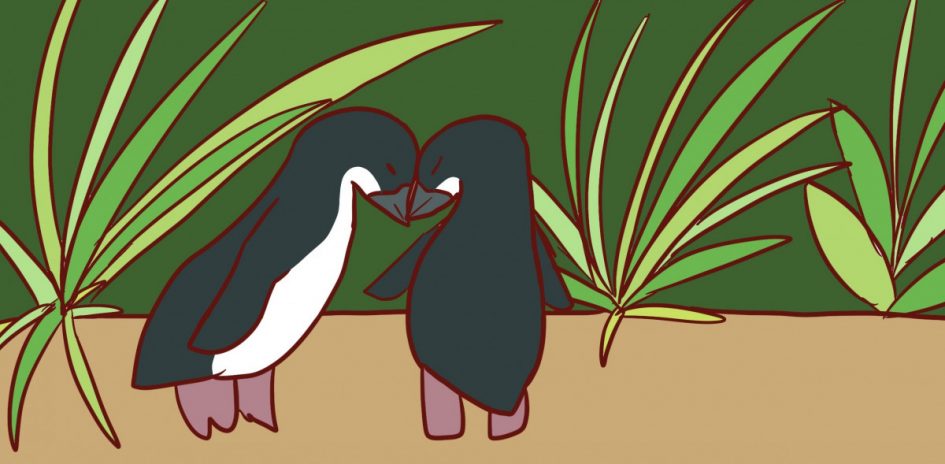
Leave a Reply